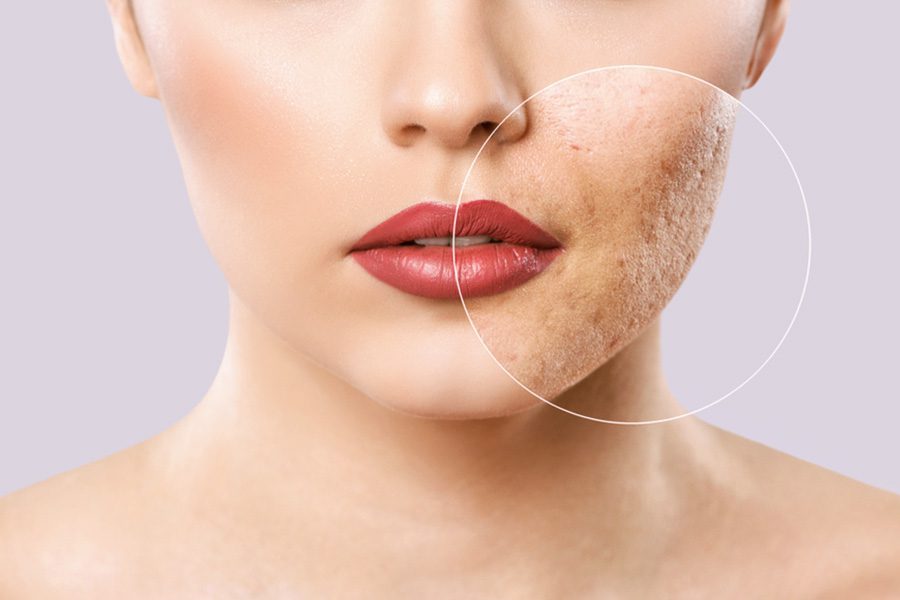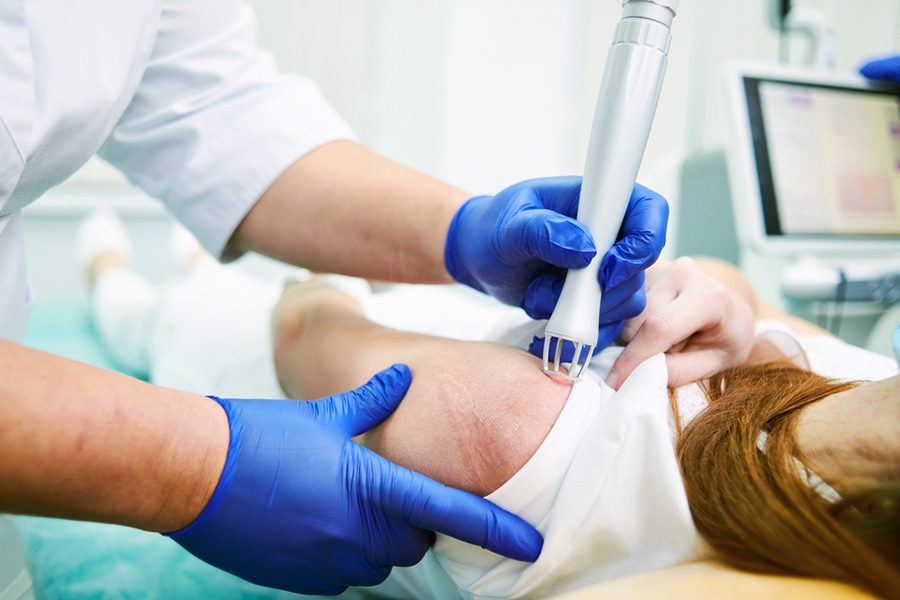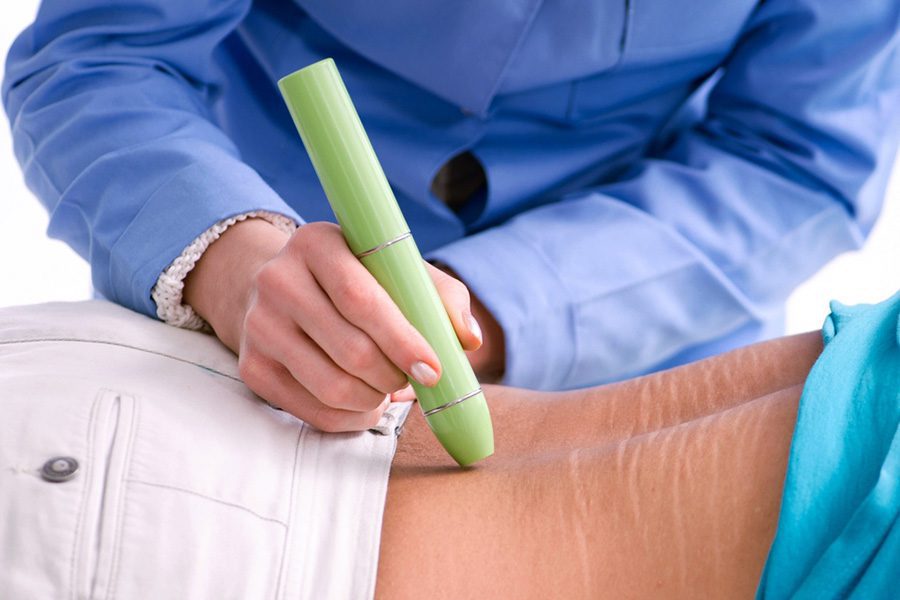Scars are a part of the body’s healing process, often forming after accidents, injuries, or surgeries. There are many ways, such as plastic surgery, laser therapy, chemical peel, and more, to help you make them less visible and even remove them completely, but which option should you go for? Can plastic surgery get rid of scars?
While they can serve as reminders of resilience, scars can be a source of self-consciousness for many individuals and cause discomfort. Many individuals seek ways to remove scars, particularly if they are in visible and sensitive areas. Plastic surgery is known for relieving those seeking to improve their appearance. But how helpful is it? Let’s get into the details!
Can Plastic Surgery Remove Scars?
Scars can form due to various reasons, including injuries, surgery, and tissue inflammation. They can appear anywhere in the body and develop in all shapes and sizes. The different types of scars include:
- Hypertrophic scars (raised, red, and thickened scars at the site of a wound)
- Keloid scars (a thick and raised scar that grows larger)
- Atrophic scars (caused by tissue loss and commonly seen with acne scars)
- Contracture scars (occur when the skin tightens, often seen after burns)
- Pigmented scars (result in changes in skin color at the injury site)
Their healing process can vary, depending on the type of the scar and the individual, as each person heals differently. In some cases, it can be challenging to find an effective scar treatment. So, can plastic surgery remove scars?
Yes, a common option for scar recovery is often plastic surgery procedures, as plastic surgeons may help improve the appearance of the scars on different parts of the face and the body.
In continuation, we will explore the possibilities and limitations of plastic surgery in the context of scar removal.

Source: shutterstock.com / Photo Contributor: dimid_86
The Role of Plastic Surgery in Scar Removal
Plastic surgery encompasses several techniques that may improve the appearance of scars. Which ones will be suitable for you depends on various factors, including the type of scarring, the size, and the scar’s location.
Individual characteristics such as skin type, texture and color, personal healing rate, and overall health also affect the technique’s suitability for your specific situation.
Scar revision
While some scars may improve with time, in some cases of severe scarring, plastic surgery procedures are necessary. This is especially the case for scars that are causing you pain or making it difficult for you to move.
The surgeons employ various techniques to address different types of scars. Scar revision involves surgically removing the old scar tissue (excision), repositioning and realigning the scar, and rejoining the skin in a manner that minimizes its appearance.
By performing a scar revision, the surgeon attempts to minimize the appearance of the scar, making it blend with the surrounding skin. This type of scar treatment is particularly effective for hypertrophic, keloid, and some atrophic scars.
Scar excision involves surgically removing the scar tissue and closing the wound with meticulous suturing if there is enough adjacent skin. This type of treatment can be effective for some types of scars, particularly for raised and thickened ones.
Scar revision can potentially minimize discomfort associated with scars and improve the scar’s color, size, texture, and thickness. The recovery after this cosmetic procedure may take weeks or months, depending on each case.
Delve into the different types of procedures employed for scar removal below.
Different Methods of Scar Revision
Z-plasty and W-plasty
Z plasty and W plasty are common scar revision surgeries. During these procedures, the surgeon makes cuts into the scarred skin, making a Z or W formation, hence the names.
Such specialized techniques are employed to reposition the scars along the natural skin lines and alter their orientation. This type of treatment is suitable for different types of scars. The procedure may help scars blend better with the surrounding skin.
Grafting and flap procedures
Skin grafting is a procedure that involves taking skin from one area of the body and transplanting it to another to cover a scar. It is common for treating burn scars.
A skin flap is similar to skin grafting. It involves moving the skin and tissue below from one to another part of the body to cover the scar site.
These procedures are often implemented for addressing large and deep scars when there isn’t enough healthy skin to close the wound.
Soft tissue fillers
This type of procedure is appropriate for depressed scars that don’t stick out but are indented into the skin. Collagen and other fillers are used to fill the indentation and raise the level of the rest of the skin, making it less noticeable.
Tissue expansion
This technique involves placing a silicone balloon under the skin near the scar. The balloon gradually inflates and may stimulate the growth of new and healthy skin. This type of procedure is commonly used for larger scars.

Source: shutterstock.com / Photo Contributor: Dmitry Kalinovsky
Other Methods for Scar Revision
Chemical peel
If the scar only affects the top layer of the skin, a chemical peel may be a suitable solution. The way this procedure works is that it causes the epidermis to peel off, exfoliating the skin. As the new skin grows back, the scar may be less noticeable. This type of treatment is suitable for surface-level scars.
Laser therapy
Laser scar removal is a noninvasive option for scar treatment. Such a therapy is intended to lessen the scar tissue. It involves using intense light to target specific aspects of the scar tissue, including redness, pigmentation, and texture.
The type of laser used depends on skin pigmentation and the scar’s age. Different types of laser removal techniques can be effective in treating different types of scars.
Some laser treatments are available to improve the uneven surface of the scars. Hence, by removing the upper layers of the skin with laser light, laser resurfacing might make elevated and rough scars less prominent and less visible. Laser treatment may improve the scar’s appearance and reduce pain and itching.
Dermabrasion and microdermabrasion
These procedures are similar to exfoliation and suitable for scars that are not too deep. They involve using a dermabrasion machine with the intention to remove the top layer of the skin and potentially reduce the appearance of scars, particularly those caused by acne.
Both procedures are physical resurfacing treatments, with dermabrasion being the more aggressive technique. These types of procedures are most appropriate for scars that are not too deep.
Benefits and Considerations of Scar Revision
Scar revision procedures may minimize discomfort associated with the appearance of scars. This branch of surgery provides options for achieving potential aesthetically pleasing results, enhancing confidence, and improving quality of life. The treatment may improve the scar’s color, size, texture, stiffness, and thickness. While plastic surgery might significantly improve the appearance of scars, it is essential to have realistic expectations.
Before pursuing any surgical intervention, consult a board-certified plastic surgeon. They will evaluate the specific type of scar that you have and discuss treatment options based on your unique circumstances.
Make sure to follow the pre and post-operative instructions by the surgeon to avoid potential risks. Maintain an open dialog with them during the process and voice any concerns you may have.

Source: shutterstock.com / Photo Contributor: Elnur
Frequently Asked Questions
Can plastic surgery remove burn scars?
Yes, plastic surgery may improve the appearance of burn scars. The specific technique the surgeon will use depends on the type, size, and location of the scar and the patient’s individual circumstances. They may employ methods such as skin grafting, tissue expansion, or laser treatment to address the scars and restore a natural appearance to the affected area.
Can plastic surgery remove acne scars?
Plastic surgery can be an effective option for potentially treating different types of scars, including acne. So, understanding how can plastic surgery get rid of scars is important before choosing the right plastic surgery method for your specific case. There are several types of procedures the surgeon may employ for treatment, such as dermal fillers, subcision, punch excision, laser therapy, and microneedling.
